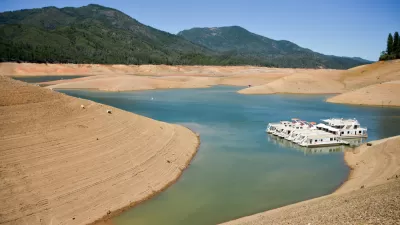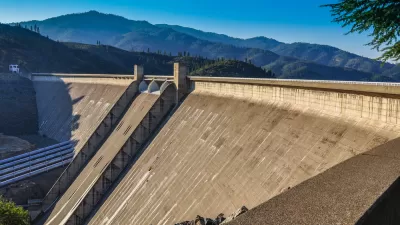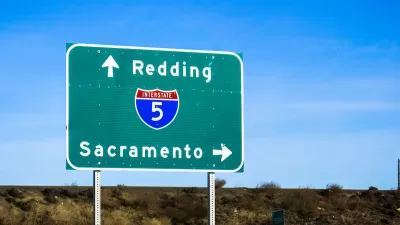A project to raise the height of the Shasta Dam, dead in the water before the Trump administration, is moving forward now that a former lobbyist for the project is the secretary of the U.S. Department of the Interior.

A controversial project to raise the height of the Shasta Dam on the Sacramento River in Northern California has been a favorite of Westlands Water District for years, but scientists at the U.S. Department of the Interior resisted the idea due to expected environmental impacts on sensitive habitat for endangered and threatened species.
David Bernhardt, the secretary for the U.S. Department of the Interior, is a former lobbyist for the Westlands Water District, and now the Shasta Dam project's prospects are improving. According to an article by Coral Davenport, "the project is going forward now, in a big win for a powerful consortium of California farmers that stands to profit substantially by gaining access to more irrigation water from a higher dam and has been trying to get the project approved for more than a decade."
According to Davenport, the Shasta Dam isn't the first example of the Interior Department moving forward on a project to the benefit of Bernhardt's former employer. "Mr. Bernhardt also promoted the weakening of an endangered-species regulation that would get Westlands more water, a move that has put him under scrutiny from his department’s inspector general," according to Davenport.
The Shasta Dam provides the main ammunition for this narrative of implied conflict of interest. "Under Mr. Bernhardt’s leadership, the Interior Department has disregarded its own scientific and legal analysis showing that raising the Shasta not only would be environmentally damaging and cost-prohibitive, but it would also be illegal under California law," reports Davenport.
Meanwhile the Fish and Wildlife Service, which works under the umbrella of the Interior Department, is moving forward with a new environmental review for the project, which is already being questioned for neglecting to analyze the effects on salmon habitat downstream of the dam.
FULL STORY: The Interior Secretary Wants to Enlarge a Dam. An Old Lobbying Client Would Benefit.

Planetizen Federal Action Tracker
A weekly monitor of how Trump’s orders and actions are impacting planners and planning in America.

Congressman Proposes Bill to Rename DC Metro “Trump Train”
The Make Autorail Great Again Act would withhold federal funding to the system until the Washington Metropolitan Area Transit Authority (WMATA), rebrands as the Washington Metropolitan Authority for Greater Access (WMAGA).

DARTSpace Platform Streamlines Dallas TOD Application Process
The Dallas transit agency hopes a shorter permitting timeline will boost transit-oriented development around rail stations.

Renters Now Outnumber Homeowners in Over 200 US Suburbs
High housing costs in city centers and the new-found flexibility offered by remote work are pushing more renters to suburban areas.

The Tiny, Adorable $7,000 Car Turning Japan Onto EVs
The single seat Mibot charges from a regular plug as quickly as an iPad, and is about half the price of an average EV.

Supreme Court Ruling in Pipeline Case Guts Federal Environmental Law
The decision limits the scope of a federal law that mandates extensive environmental impact reviews of energy, infrastructure, and transportation projects.
Urban Design for Planners 1: Software Tools
This six-course series explores essential urban design concepts using open source software and equips planners with the tools they need to participate fully in the urban design process.
Planning for Universal Design
Learn the tools for implementing Universal Design in planning regulations.
Municipality of Princeton
Roanoke Valley-Alleghany Regional Commission
City of Mt Shasta
City of Camden Redevelopment Agency
City of Astoria
Transportation Research & Education Center (TREC) at Portland State University
US High Speed Rail Association
City of Camden Redevelopment Agency
Municipality of Princeton (NJ)





























